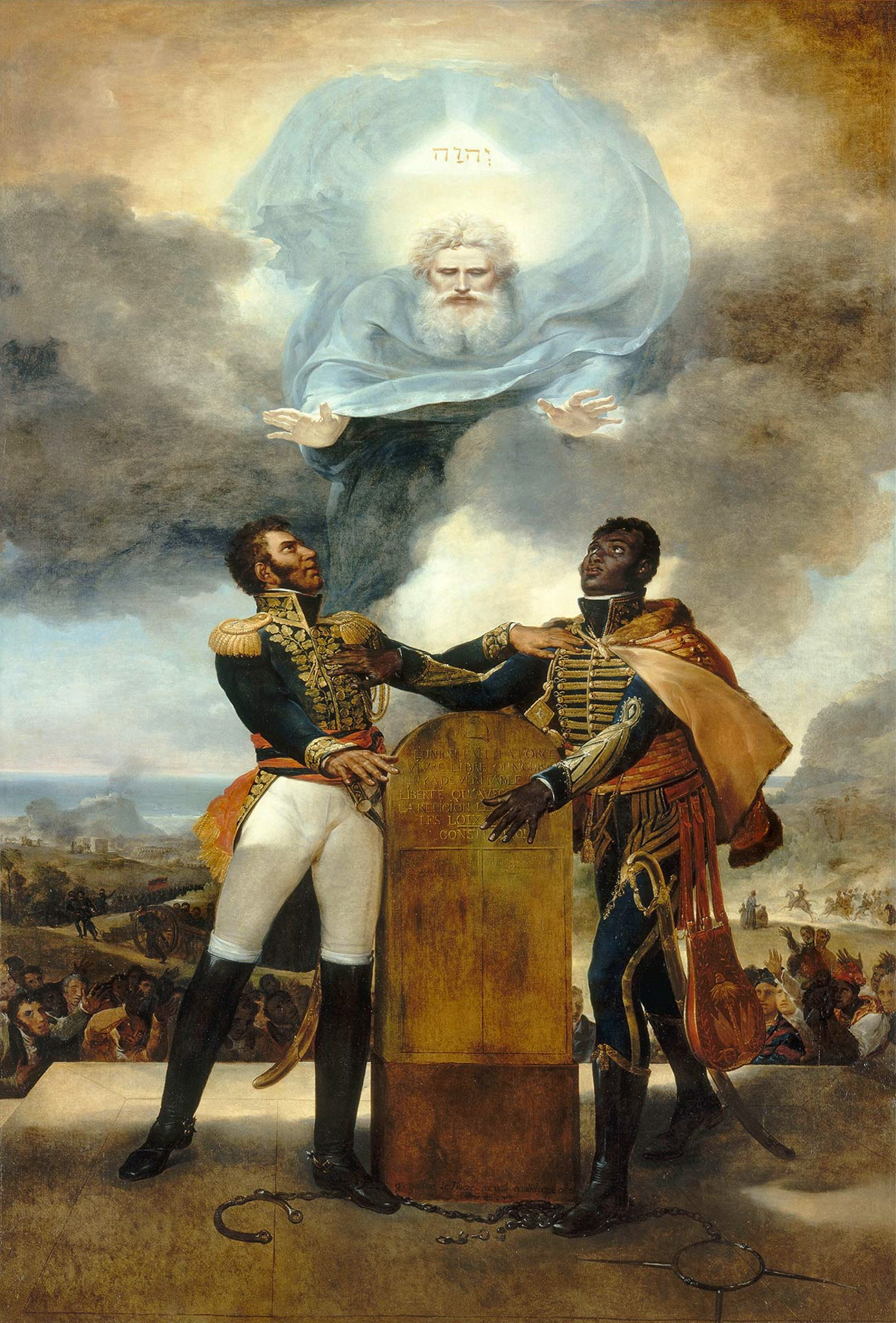The Oath of the Ancestors symbolizes the historic meeting between the leader of Saint-Domingue, Alexandre Pétion, and General Jean-Jacques Dessalines, lieutenant of Toussaint Louverture. The two officers seal, in November 1802, an alliance to drive out the French troops. The solemn "oath" which should allow Haiti's independence in the short term comes shortly after the general uprising of the blacks of the colony on the announcement of the reestablishment of slavery decided in Paris by Napoleon Bonaparte.
This painting is the only one of his career where Guillon-Lethière, the first man of color to establish himself in the world of Western painting, evokes his origins, and shows his solidarity with the young black republic of Haiti, then not yet recognized. in France. This painting knows a curious destiny. It was offered to Haiti: smuggled, it arrived in Port-au-Prince in March 1823.
Disappeared since the end of the 19th century, it was found in the cathedral of the Haitian capital in 1991, then restored in Paris by the Louvre, before returning to Haiti in 1998: It was first presented in 1998 at the Louvre Museum, then at Unesco, before being exhibited at Fort Delgrès in Guadeloupe. Then, the painting joins the Republic of Haiti. It is deposited at the National Palace.
Following the earthquake of 2010, following which the National Palace had to be demolished, "Le Serment des Ancêtres ", found by French firefighters in the ruins of the presidential palace in the Haitian capital, has been restored again at the Louvre and returned to Haiti.
Painting